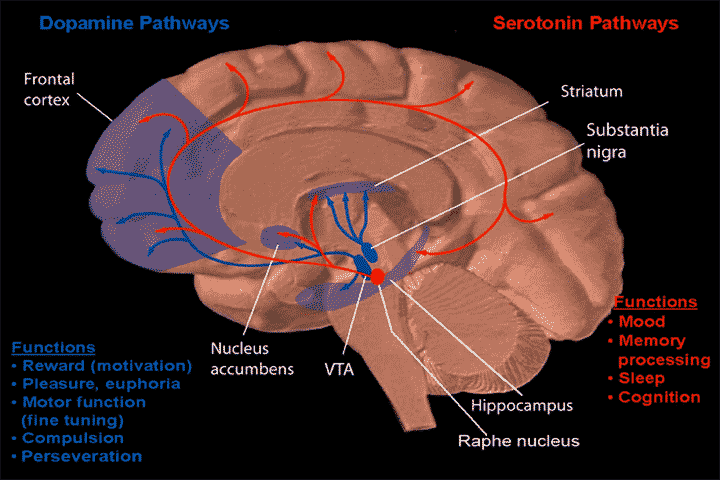The Role of our Nucleus Accumbens
Scientists initially considered the Nucleus Accumbens, located in our forebrain, as simply “the reward center” of our brain. This organ is now known to have wider implications. It plays a key role in both pleasurable and adverse experiences, and serves as the neural interface between motivation and action. And it’s involved in several behaviors, including sleep, eating, sex, reward and addictions.
When we do anything that we consider rewarding, we activate dopamine1 neurons in the brain. (See Neurochemicals: Pathways to Self-Healing.) The reward stimulus activation increases dopamine levels in the brain. Thus, our Nucleus Accumbens plays an important role as a major dopaminergic pathway in the brain.
Sometimes, however, pain or discord in relationships play off between this organ and the amygdala. (The amygdala, or pain center, intimates the fight, flight, or freeze response.) In fact, dopamine levels rise anytime we experience something that we judge as either positive or negative. This happens because the nucleus accumbens and amygdala are both located in the basal forebrain. In other words, the pleasure center and the pain or fear center are really close together. This may explain why fear can be related to the experience of pleasure.
In summary, the nucleus accumbens is an important brain area that forms memories of, and responds to, environmental stimuli—both positive and negative.
1Dopamine, a chemical found naturally in the human body, is a neurotransmitter, meaning it sends signals from the body to the brain. Dopamine plays a part in controlling the movements our body makes, as well as our emotional responses.
To leran about a nearby brain struture, see Prefrontal Cortex.
Click here for more information in a short 2 minute video.

